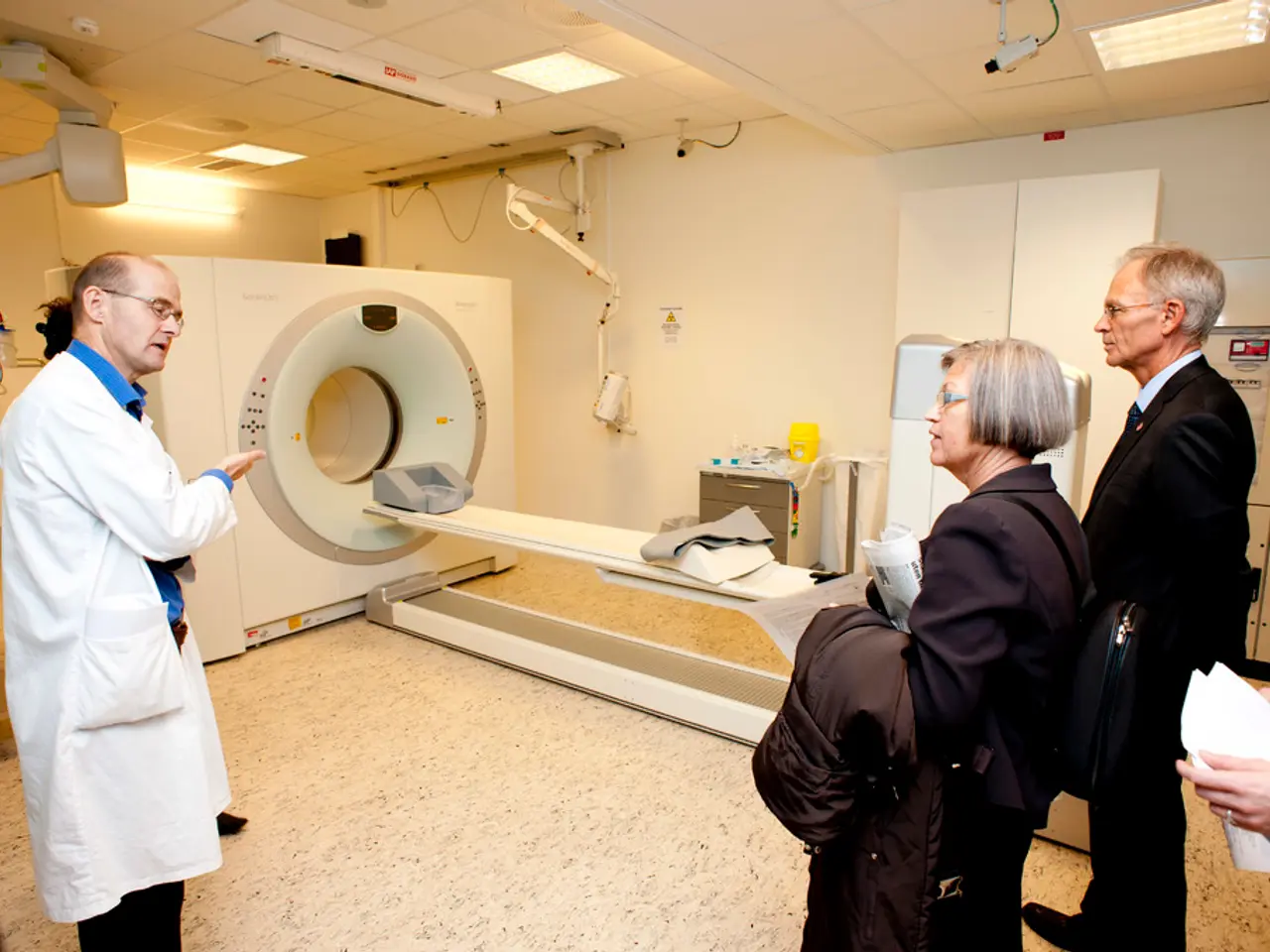Ultrasound at 18 weeks: A glimpse into the developing fetus and what you'll discover
The 18-week ultrasound, also known as a Level 2 ultrasound or a detailed anatomy scan, plays a crucial role in prenatal care. This essential assessment is typically carried out between 18 and 22 weeks of gestation.
The primary purpose of the 18-week ultrasound is to provide a comprehensive evaluation of the fetus's development, examining various organs and structures such as the heart, brain, spine, limbs, face, and kidneys[1][2]. It also helps identify potential structural issues, including spina bifida, heart defects, limb deformities, and cleft lip, allowing for informed decision-making[1][3].
During the scan, the doctor or ultrasound technician also assesses the placenta's function and position, along with amniotic fluid levels, which are crucial for fetal health[3].
The ultrasound process is straightforward. No specific preparation is usually required, but a full bladder may be advised to improve image quality. The ultrasound is performed by a trained sonographer using a high-resolution ultrasound machine. The sonographer applies gel to the abdomen and uses a transducer to capture images of the fetus[3].
The procedure typically lasts about 30 minutes to an hour, depending on the complexity of the scan and the clarity of the images obtained. After the scan, the results are reviewed by a healthcare provider to check for any abnormalities or concerns, and further testing may be recommended if necessary[1][3].
Seeing the fetus's development can be emotionally uplifting for parents, and identifying any potential issues early allows for timely decision-making regarding further testing or care. The scan is part of ongoing pregnancy monitoring, ensuring both the mother and baby receive appropriate care[1][3].
In some cases, the provider may insert the transducer into the vagina for a clearer image (transvaginal ultrasound). Modern technology has also led to advancements, with many providers now offering 3D ultrasounds, which provide clearer images of the fetus's features compared to traditional ultrasounds[1][3].
However, it's essential to note that the 18-week ultrasound has limitations, as it cannot detect all congenital disabilities. Furthermore, images from the 18-week ultrasound may not be fully accurate due to small shadows and positioning issues[1][3].
In conclusion, the 18-week ultrasound is a vital tool for ensuring fetal health and guiding further prenatal care. It provides valuable information about the fetus's development, helps detect potential complications, and plays a crucial role in the ongoing monitoring of both the mother and baby during pregnancy.
- To better predict potential health issues for the baby and guide decisions in health-and-wellness, some health providers may recommend a type of ultrasound called predictive AQ in addition to the regular 18-week ultrasound.
- research on diabetes state that Pfizer's latest medications have shown promising results in preventing blocked arteries, which could potentially improve the lives of those living with diabetes and depression.
- The 18-week ultrasound is also useful in assessing the health of the placenta, which plays a vital role in the development of type 2 diabetes in pregnant women.
- In the realm of science, there is ongoing research to develop more efficient methods of diagnosing and managing diabetes, with a focus on preventing complications related to the disease such as depression and blocked arteries.
- Modern health providers are increasingly adopting predictive analytics to assist in detecting and managing various health conditions, including diabetes, depression, and potential blockages in the arteries, all of which can have significant impacts on one's overall health-and-wellness.




